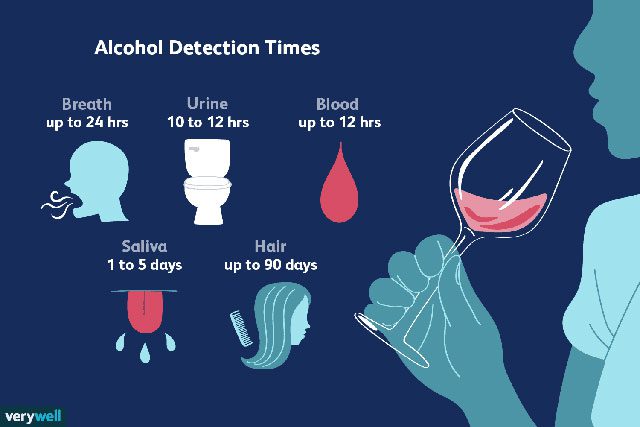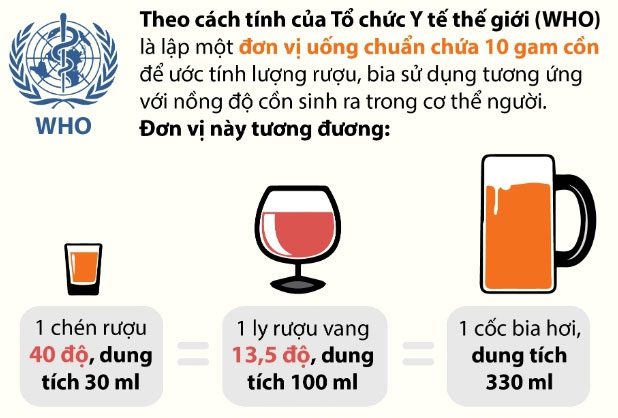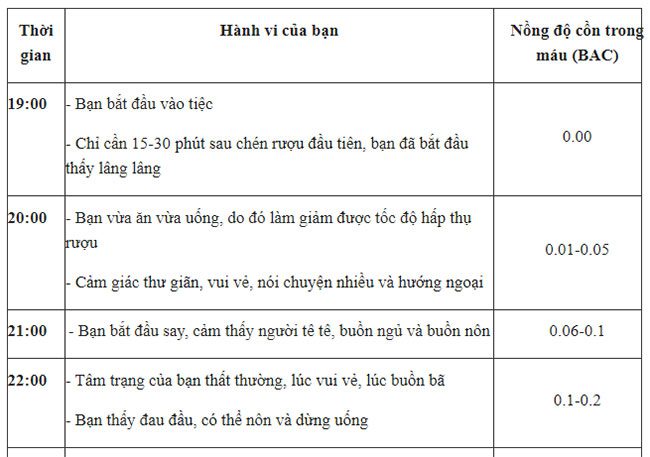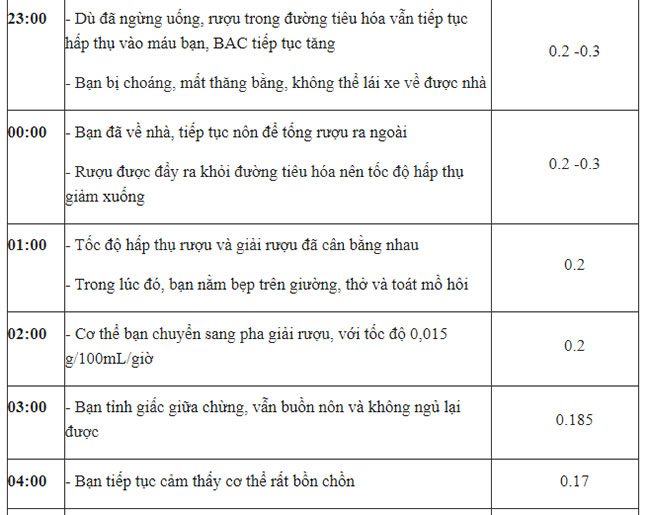The first alcohol molecules take only 90 seconds to travel through your circulatory system. And the last molecules will not leave your body for as long as 90 days.
If you have ever been drunk at least once, you will know the discomfort it causes. From dizziness and nausea to lying flat for half a day without being able to regain your composure.
This is because alcohol, beer, and other alcoholic drinks directly affect the central nervous system. They impair vision, cognitive function, and coordination of the drinker.
This process occurs so subtly that many people cannot recognize when they start to feel drunk and how long the intoxication will last. As a result, they put themselves at risk of self-harm, causing traffic accidents, and affecting those around them.
This article will provide you with insight into what can happen after consuming about 15 shots of 40-proof liquor. This is a typical drunken episode that can last up to 20 hours.

Alcohol, beer, and other alcoholic beverages directly affect the central nervous system, causing you to exhibit symptoms of drunkenness. (Photo: iStock).
The first alcohol molecules take only 90 seconds to spread throughout your body
The first thing you need to know is that alcohol is not digested like food. Just after the first sip, a small amount of alcohol is absorbed into your bloodstream through your tongue and the mucous membranes of your mouth. The circulatory system then takes about 90 seconds to distribute these drops of alcohol throughout your body.
After that, most of the remaining alcohol flows down to your stomach, where it continues to permeate through the stomach and small intestine tissues to enter the bloodstream. Depending on gender, body composition, the presence of food in the stomach, and the liver’s ability to produce alcohol dehydrogenase, the effects of alcohol will occur either quickly or slowly.
For example, drinking alcohol on an empty stomach will cause the alcohol to be absorbed into the bloodstream faster. Conversely, when food occupies space in the stomach, it will prevent alcohol from going directly into the small intestine. The surface area of the small intestine is very large (if the mucosal surfaces were spread out, the small intestine would be the size of a tennis court), thus it will absorb alcohol very quickly.
If there is food blocking the end of the stomach (duodenum), the alcohol will be isolated there and absorbed more slowly.
However, the National Institutes of Health in the United States states that on average, the first effects caused by alcohol on the body will begin about 10 minutes after the first drink. After that, it takes about 15-45 minutes for these effects to become apparent and dominate the drinker’s psyche and behavior.
The more you drink, the more alcohol your body will absorb, leading to severe neurological symptoms. This is because alcohol can remain in your bloodstream for over 12 hours. It can be detected in breath for up to 24 hours.
After 1-5 days, saliva tests can still detect alcohol. And in a surprising twist, your hair can store alcohol molecules that you ingested for up to 90 days.

Alcohol can be present in your breath for 24 hours, in urine and blood for 12 hours, in saliva for 5 days, and in hair for 90 days. (Photo: Verywell).
Calculating your level of intoxication
Scientists have conducted experiments observing drinkers, extracting their blood, and measuring blood alcohol concentration (BAC) to quantify the extent to which alcohol affects our minds and bodies.
BAC is measured by the mass of alcohol (grams) present in every 100 ml of blood. Scientific estimates suggest that our BAC will increase by 0.01-0.03 units for each unit of alcohol consumed.
According to the standards of the World Health Organization (WHO), 1 unit of alcohol = Volume (ml) x (concentration %) x density (alcohol has a density of 0.793g/cm3). 1 unit of alcohol = 10g of pure alcohol.
Thus, 1 unit of alcohol is equivalent to 1 shot of 30ml of 40-proof liquor, 1 glass of wine 100ml (13.5%) or a 330ml beer (5%):

This means that each 30ml shot of 40-proof liquor can increase BAC by an average of 0.02 units.
Conversely, alcohol is metabolized by our bodies at an average rate of 0.015 g/100mL/hour, which corresponds to a reduction in your BAC of 0.015 for every hour.
Based on these calculations, we can establish a reference chart for a typical drunken episode of a person who has consumed about 15 shots of liquor. This drunken process will unfold over a period of 20 hours as follows:




Advice for you
As you can see, a typical drunken episode can last up to 20 hours. It places you at high risk of traffic accidents, self-harm, and affecting those around you. Your productivity will also be diminished throughout the following workday.
Moreover, the long-term harms that alcohol can inflict on your body are significant. Studies have shown that regular alcohol consumption increases the risk of cancer, cardiovascular diseases, liver disease, gastrointestinal disorders, neurological effects, and a greater risk of early mortality.
At a party, to maintain a fun and healthy atmosphere, you should not drink more than 3 units of alcohol, which means stopping at the third shot of liquor or beer. At this level (0.05 BAC), alcohol will act as a social lubricant, encouraging people to be more outgoing and chatty.
Even if you have been drinking, you should never drive home. However, drinking at this level will ensure your body has enough time to metabolize the alcohol after a night of rest. The next morning, you can wake up completely sober, able to drive to work, and maintain a productive day.



















































